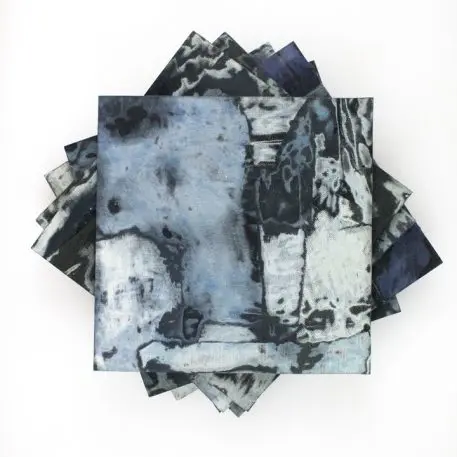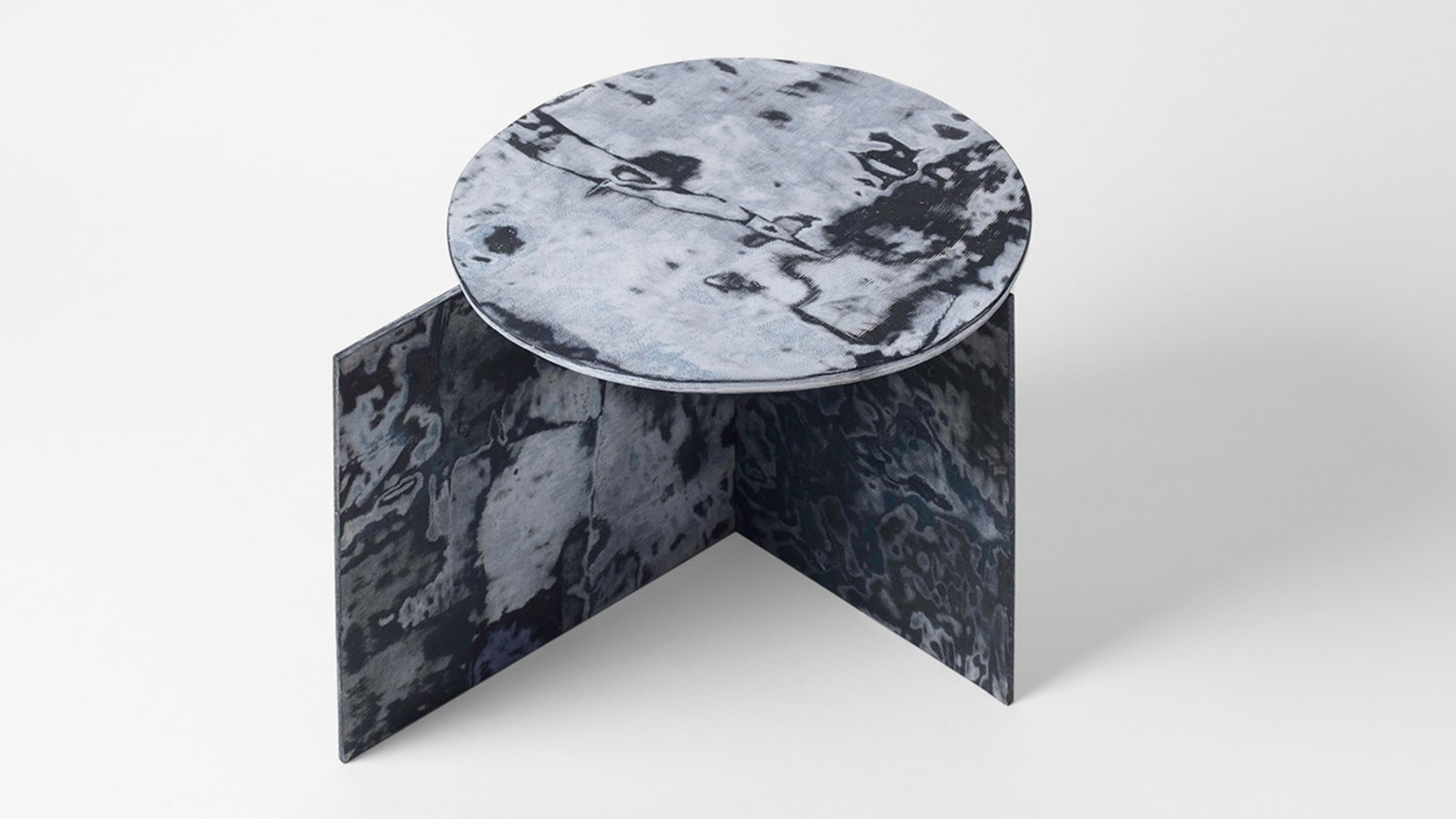It was 2014, and Sophie Rowley was a design master’s student in Central Saint Martins in London. She needed to create a stunning final project, but she was broke. So she did what any resourceful person would do: She went dumpster diving. She experimented building with old CDs, glass, textiles, Styrofoam.

Back then, almost nobody was viewing waste as a building material. “For some reason the experiments with denim textiles were the most successful,” she says. “So after having worked for other people for a few years I devoted myself back to working with recycled denim since I started my own practice last year.”
The results of all that work, ingenuity, and financial struggle can be seen in her Bahia Denim projects–which include actual furniture like this table made of denim. The name comes from Brazilian blue marble, and at a glance, it really does look something like marble–or perhaps acid-washed concrete. In fact, it’s the result of dipping worn jeans into bioresin (a plastic made from organic compounds instead of petroleum), and laying them over various molds. The denim is layered and criss crossed, much like papier-mâché. “The material becomes a composite material similar to fiberglass in which the textile serves as a reinforcement of the resin,” says Rowley.
The magic happens when it all dries and hardens. The material doesn’t feel like plastic. It feels like fabric. “The exposed surface is jeans, so it has a soft and warm sensation,” says Rowley.

As Rowley has matured as a designer, she’s come to recognize the environmental advantages of working with denim, in addition to the economic ones. While Americans go through 68 pounds of clothing per person per year, only 16% of America’s clothing is recycled, while the rest ends up in landfills or is incinerated. Denim, in particular, has a wicked environmental footprint, largely due to a combination of short-wear fast fashion and the chemical processes that dye and distress our jeans to perfection.
With denim, Rowley is able to turn trash into treasure. “I receive the waste jeans from recycling centers here in Germany,” she says. “With the Bahia Denim material, I can recycle about 10 to15 pairs of jeans per square meter.”
Rowley’s challenges now are to find a more sustainable alternative to the bioresin, which is a form of plastic, and figuring out how to scale her work from bespoke, hand-made pieces into more mass-manufactured goods. Currently, she thinks the way may be to produce large Bahia Denim paneling, basically 2D squares that can be hung inside buildings. Even that is difficult. “To size up a sample always seems to be quite a challenge as things don’t necessarily work out the same way on a different scale,” says Rowley.
Recognize your brand’s excellence by applying to this year’s Brands That Matter Awards before the early-rate deadline, May 3.




